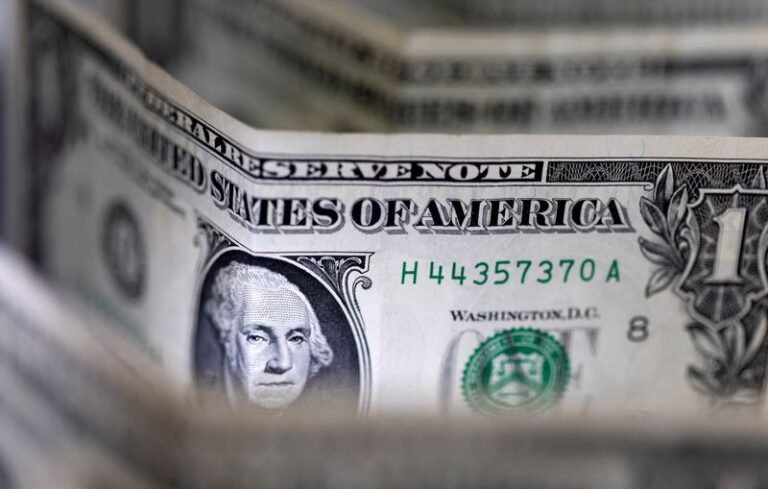
Dollar Weakens as Fed Rate Hike Cycle Nears End
Dollar Heading for Weekly Loss
The US dollar is showing signs of weakness in early European trade on Friday. Traders are anticipating the end of the Federal Reserve’s rate-hiking cycle, resulting in the dollar’s decline. However, the release of nonfarm payrolls data later in the session is keeping the market cautious.
At 03:20 ET (07:20 GMT), the Dollar Index, which measures the greenback against six other currencies, was down 0.1% at 105.892. It is expected to finish the week with a 0.5% decrease, marking its third week of losses in the last 16 weeks.
Bank of England Retains Hawkish Stance
The pound traded mostly unchanged at 1.2202, with a 0.7% weekly gain. The Bank of England held interest rates steady but emphasized that it does not plan to cut rates anytime soon due to inflation remaining higher than the target.
Bank of England Chief Economist Andy Haldane is set to provide an online presentation of the central bank’s new forecasts and latest policy decision later in the session.
Euro Offers More Upside
The euro rose 0.1% to 1.0630, expected to record a 0.6% weekly gain. Traders are debating how long the European Central Bank will maintain high interest rates considering the region’s economic weakness.
ECB board member Benoît Cœuré stated that the “last mile” of disinflation may be the toughest, and the central bank cannot yet rule out further rate hikes.
Aussie Dollar in Demand
In holiday-thinned trade, the Australian dollar fell 0.1% to 150.36, while the Chinese yuan edged lower to 7.3152. A private survey showed that Chinese manufacturing activity grew less than expected in October, although it did accelerate slightly from the previous month.
The New Zealand dollar rose 0.1% to 0.6439, anticipating a weekly gain of around 1.7%. There are increasing expectations of an interest rate hike by the Reserve Bank of New Zealand in its upcoming meeting.
Dollar Set to Post Weekly Loss; Fed Rate Peak Looms
The US dollar is weakening as traders anticipate the end of the Federal Reserve’s rate-hiking cycle. This follows the Fed’s decision to keep rates steady and provide dovish signals on interest rate hikes. The market is now more interested in a Federal Reserve pause, resulting in increased demand for high-yielding currencies through the carry trade.
The release of key nonfarm payrolls data later in the day will be crucial in determining the dollar’s future direction. Resilience in the labor market could give the Fed more reason to hike interest rates, potentially reversing some of the dollar’s recent weakness.
Eurozone Data and Calm Dollar Environment
Despite negative eurozone data, including weak growth and confidence, and lower inflation, the calmer dollar environment suggests the possibility of the EUR/USD pair creeping higher again. The euro’s strength will be influenced by the European Central Bank’s decision on interest rates, considering the regional economic weakness.